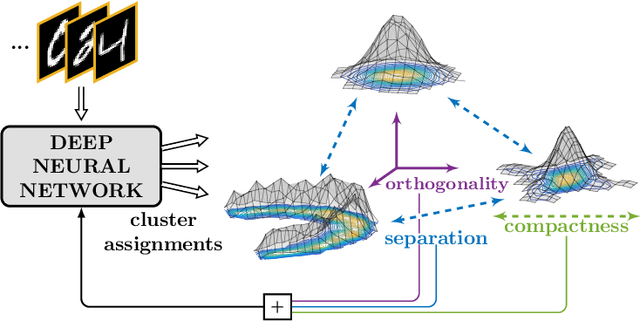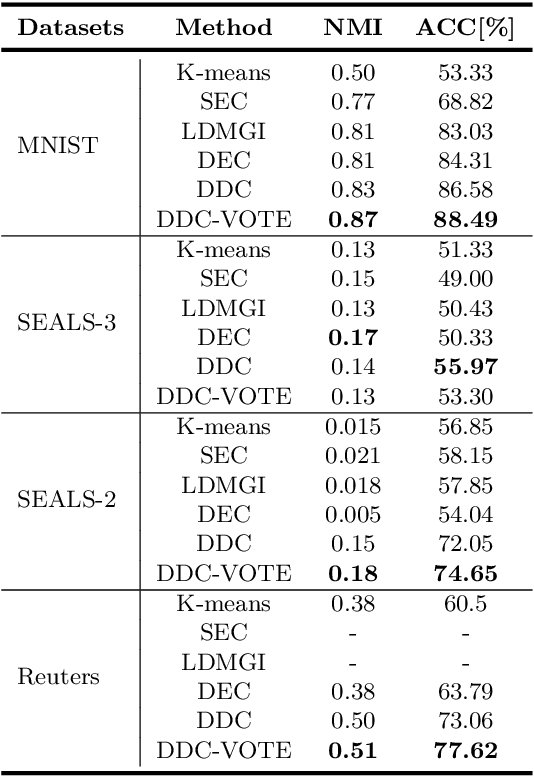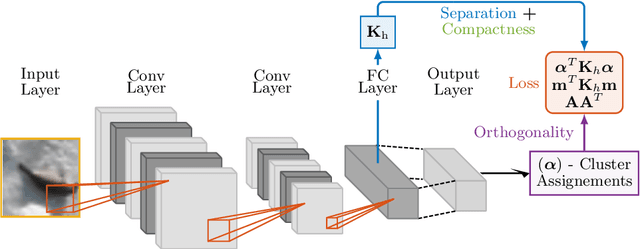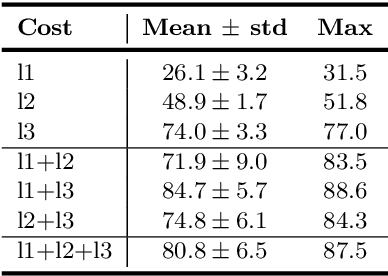Filippo M. Bianchi
Code-Aligned Autoencoders for Unsupervised Change Detection in Multimodal Remote Sensing Images
Apr 15, 2020



Abstract:Image translation with convolutional autoencoders has recently been used as an approach to multimodal change detection in bitemporal satellite images. A main challenge is the alignment of the code spaces by reducing the contribution of change pixels to the learning of the translation function. Many existing approaches train the networks by exploiting supervised information of the change areas, which, however, is not always available. We propose to extract relational pixel information captured by domain-specific affinity matrices at the input and use this to enforce alignment of the code spaces and reduce the impact of change pixels on the learning objective. A change prior is derived in an unsupervised fashion from pixel pair affinities that are comparable across domains. To achieve code space alignment we enforce that pixel with similar affinity relations in the input domains should be correlated also in code space. We demonstrate the utility of this procedure in combination with cycle consistency. The proposed approach are compared with state-of-the-art deep learning algorithms. Experiments conducted on four real datasets show the effectiveness of our methodology.
Unsupervised Image Regression for Heterogeneous Change Detection
Sep 07, 2019



Abstract:Change detection in heterogeneous multitemporal satellite images is an emerging and challenging topic in remote sensing. In particular, one of the main challenges is to tackle the problem in an unsupervised manner. In this paper we propose an unsupervised framework for bitemporal heterogeneous change detection based on the comparison of affinity matrices and image regression. First, our method quantifies the similarity of affinity matrices computed from co-located image patches in the two images. This is done to automatically identify pixels that are likely to be unchanged. With the identified pixels as pseudo-training data, we learn a transformation to map the first image to the domain of the other image, and vice versa. Four regression methods are selected to carry out the transformation: Gaussian process regression, support vector regression, random forest regression, and a recently proposed kernel regression method called homogeneous pixel transformation. To evaluate the potentials and limitations of our framework, and also the benefits and disadvantages of each regression method, we perform experiments on two real data sets. The results indicate that the comparison of the affinity matrices can already be considered a change detection method by itself. However, image regression is shown to improve the results obtained by the previous step alone and produces accurate change detection maps despite of the heterogeneity of the multitemporal input data. Notably, the random forest regression approach excels by achieving similar accuracy as the other methods, but with a significantly lower computational cost and with fast and robust tuning of hyperparameters.
Deep Divergence-Based Approach to Clustering
Feb 13, 2019



Abstract:A promising direction in deep learning research consists in learning representations and simultaneously discovering cluster structure in unlabeled data by optimizing a discriminative loss function. As opposed to supervised deep learning, this line of research is in its infancy, and how to design and optimize suitable loss functions to train deep neural networks for clustering is still an open question. Our contribution to this emerging field is a new deep clustering network that leverages the discriminative power of information-theoretic divergence measures, which have been shown to be effective in traditional clustering. We propose a novel loss function that incorporates geometric regularization constraints, thus avoiding degenerate structures of the resulting clustering partition. Experiments on synthetic benchmarks and real datasets show that the proposed network achieves competitive performance with respect to other state-of-the-art methods, scales well to large datasets, and does not require pre-training steps.
Remote sensing image regression for heterogeneous change detection
Jul 31, 2018



Abstract:Change detection in heterogeneous multitemporal satellite images is an emerging topic in remote sensing. In this paper we propose a framework, based on image regression, to perform change detection in heterogeneous multitemporal satellite images, which has become a main topic in remote sensing. Our method learns a transformation to map the first image to the domain of the other image, and vice versa. Four regression methods are selected to carry out the transformation: Gaussian processes, support vector machines, random forests, and a recently proposed kernel regression method called homogeneous pixel transformation. To evaluate not only potentials and limitations of our framework, but also the pros and cons of each regression method, we perform experiments on two data sets. The results indicates that random forests achieve good performance, are fast and robust to hyperparameters, whereas the homogeneous pixel transformation method can achieve better accuracy at the cost of a higher complexity.
The Deep Kernelized Autoencoder
Jul 23, 2018



Abstract:Autoencoders learn data representations (codes) in such a way that the input is reproduced at the output of the network. However, it is not always clear what kind of properties of the input data need to be captured by the codes. Kernel machines have experienced great success by operating via inner-products in a theoretically well-defined reproducing kernel Hilbert space, hence capturing topological properties of input data. In this paper, we enhance the autoencoder's ability to learn effective data representations by aligning inner products between codes with respect to a kernel matrix. By doing so, the proposed kernelized autoencoder allows learning similarity-preserving embeddings of input data, where the notion of similarity is explicitly controlled by the user and encoded in a positive semi-definite kernel matrix. Experiments are performed for evaluating both reconstruction and kernel alignment performance in classification tasks and visualization of high-dimensional data. Additionally, we show that our method is capable to emulate kernel principal component analysis on a denoising task, obtaining competitive results at a much lower computational cost.
 Add to Chrome
Add to Chrome Add to Firefox
Add to Firefox Add to Edge
Add to Edge